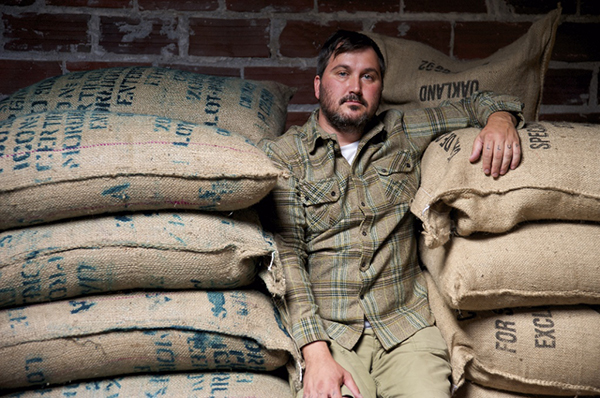
According to legend, coffee as a beverage was developed thanks to a goat herder in the Ethiopian highlands who noticed that when his goats ate berries from a certain tree, they grew more spirited, and wouldn’t sleep at night. The goatherd reported this to the head of a local monastery, who brewed a beverage from those berries in order to stay awake through prayers. The next episode in the story of coffee takes place in the Arabian Peninsula, where the coffee trade began in earnest, along with the establishment of coffee houses and the development of coffee house culture. When coffee arrived in Europe in the 1600s, the brew was condemned by clergy as the “bitter invention of Satan.” But that didn’t slow the incredible growth of the coffee industry. In the New World tea was, and might have remained, the beverage of choice, were it not for the Boston Tea Party. Overnight, it became downright patriotic to consume coffee. By the 19th century, the invention of the vacuum pack put coffee (albeit not very high quality coffee) on nearly every breakfast table in America. Anyone who imagines that the saga of the coffee bean ends in Seattle, with the Starbucks-driven rise of the barista, clearly hasn’t (yet) experienced a cup from Stumptown Coffee Roasters in Portland, OR. Welcome to the next chapter.
SOMA managed to catch up with Duane Sorenson, the indefatigable and peripatetic founder of Stumptown Coffee. Sorenson is one of the key players in “The Third Wave of Coffee,” a term coined to indicate the seismic shift in mentality regarding coffee in the United States in the 1990s. He is also behind critically acclaimed Portland eateries Ava Gene’s, Roman Candle Baking Co., and Woodsman Tavern among others, and constantly travels the world searching for the perfect bean. That’s in addition to opening new locations in the Stumptown Coffee empire, growing and maintaining relationships with those on every level of the coffee chain, and tirelessly ensuring quality control. Unsurprisingly, like the Ethiopian goats of legend, Sorenson regularly consumes quantities of caffeine that might fell a lesser man.
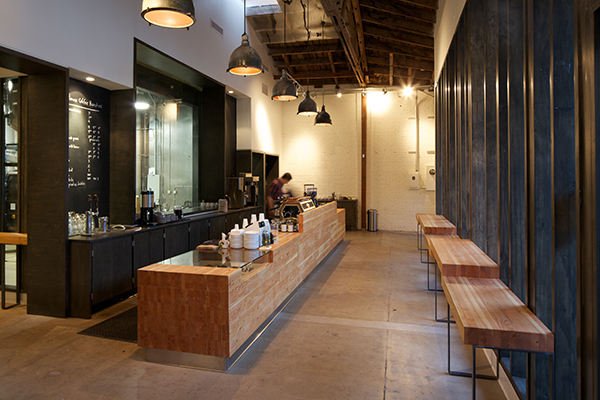
Why the name Stumptown? Why Portland?
Growing up in Seattle, I’d been coming to Portland for years to see punk rock bands and to skateboard, because Portland had the only public skate park in the Northwest. We always referred the city as Stumptown. When I started my business, it only felt natural to call it that. As for the location, right now we have Stumptown outposts in downtown LA, Portland, and Brooklyn, and we’ve had a pop-up café in the summer in Amsterdam. These are cities I want to hang out in, and that my employees want to hang out in. With Amsterdam, I love the city and wanted to share the experience of it with my employees. Employees are so important. I like to hire people who are happy and excited, and give them a fun and creative place to work.
You mention punk rock, and are known for hiring super creative employees, yet you’ve claimed in interviews that you “have no hobbies” outside of coffee. Is that really true?
It’s true I have no hobbies—I do have a passion for music and art, but I can only spend so much time in a gallery before wanting to go taste food. With music, I see it almost like clothing, like it’s part of my wardrobe—I’m not going to walk out the door without pants on, or without music— it’s always in the background. I also like to travel, but it’s usually related to coffee: in the next six months, I’ll be in Central America, Central Africa, and Indonesia, sourcing beans.
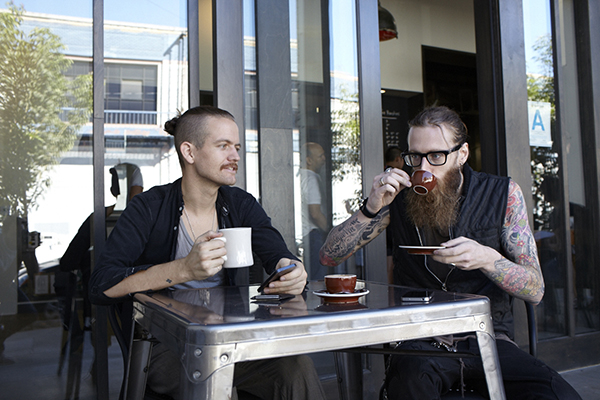
The vocabulary you use when describing coffee has traditionally been reserved for wine: terms like notes, mouthfeel, and terroir. As a sophisticated taster, what do you feel makes a truly great coffee, and what are the best and worst ways to brew it?
When sourcing coffee, I look for flavor, acidity, and mouthfeel. Hard to define, for sure, but the most important characteristic, cleanliness, is simple. It means a transparent brew, without a lot of sediment. I brew with a Chemex at home. I’ll make 3 to 4 pots before I even leave the front door. The Chemex results in pronounced flavor, not masked like with some other methods. In my coffee bars, I favor the espresso. It’s a technique that takes a lot of focus and care: crucial elements in making a good cup. My least favorite way to make coffee? Through a tube sock in the mountains of Ethiopia. Yes, I’ve done that. Sometimes you have to use what’s on hand.
And what are your favorite wines?
I love Italian wines from the Piedmont. Oregon pinots are spectacular, too. As with coffee, the terroir and the varietal have a lot to do with it, but the picking and processing definitely affect the profile.
In coffee, how so?
The roasting is key. And the roasting will be different depending on season and varietals. In winter, for example, I like Colombian varietals. The brew is clean and sweet, with a medium to high acidity, and good citric characteristics. The coffee needs to be roasted by hand to bring that out. Coffee beans change very rapidly once they’re picked. We try to obtain small quantities, and to roast them quickly so the customer has the opportunity to try different coffees at their peak.
How do you ensure quality and consistency, especially with so many varietals and small batches?
I taste our coffees all day long. Our employees do, too. Everyone is always tasting, so there are a lot of eyes and a lot of palettes ensuring the coffee is the best it can be. It’s a group effort. At Stumptown, we call focused, detailoriented tasting ‘cupping.’
Sounds like a lot of caffeine. Do you ever get the jitters?
I’m pretty immune. I can drink coffee all day, but I can also function without. If I ever do start to feel a little jittery, there’s always a cold beer!
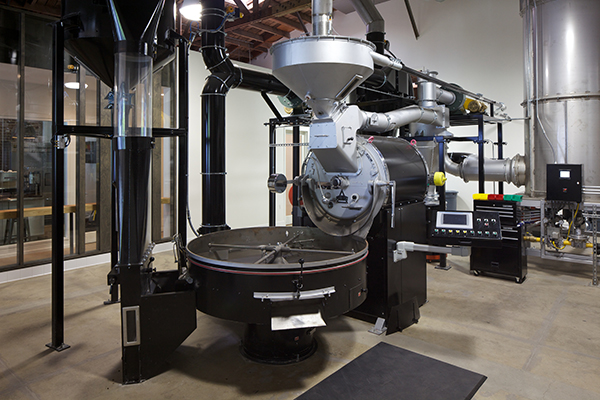
Speaking of beer, your foray into breakfast beers was an interesting project. And it’s only one of your seemingly maverick moves, such as restaurants, pop-up cafes, etc. Can you elaborate?
Regarding the beer, I did work in a brewery for a short while and also, during my travels, I noticed that blue-collar workers and farmers in many places would drink beer in the morning, so the idea evolved naturally. I plan on brewing a lot more. I’m also working on coffee liqueurs. As for the restaurants, they kind of evolved from my love for Portland and the neighborhood I live in. Growing up, working in a sausage factory with my dad, I learned to appreciate the foodie culture, and developed my palette and a real work ethic. Basically, I’ve never had a business plan. I have ants in my pants and like to go with the flow. With all the business decisions I make, I go with my gut and heart. I have my work ethic and my passion, and I truly believe in giving people an experience. It’s worked out so far—people are loving my coffee.
How has the industry changed since you began?
I started Stumptown on November 1, 1999, but I don’t see myself as a forerunner in any way. In general, I’ve noticed an improvement in consumer awareness. Coffee has improved dramatically, and I am excited and happy as a consumer. I’m also excited to be a part of a movement towards improving people’s morning cup of coffee. I’m by no means content or satisfied. I will keep on working.
Despite Sorenson’s modesty regarding his position in the pantheon of coffee roasters, Stumptown Coffee Roasters has quickly grown into a veritable phenomenon. The brand’s rapid expansion can be attributed not only to a consistently high-quality product, which is regularly top-rated by tasters, but also to effective partnerships: despite his self-professed lack of a plan, Sorenson’s perfectionism and natural affinities have led to symbiotic business relationships that have proven very positive for Stumptown. For example, Sorenson has always loved food and restaurants, so Stumptown has quite naturally teamed up with eateries—including multi-Michelin-starred restaurants—looking to enhance their coffee program, giving it as much attention as they would their wine selections. Sorenson’s love for travel, and perchance his experience brewing coffee through a sock, may be behind the camp coffee kit Stumptown created in collaboration with high-end outdoor gear company Poler. Though the primary intention may have been better coffee while dining or out in the wild, it is pretty brilliant branding, and results in effectively introducing the Stumptown Coffee name and experience to new, educated and discerning audiences who have grown to crave a high-quality product.
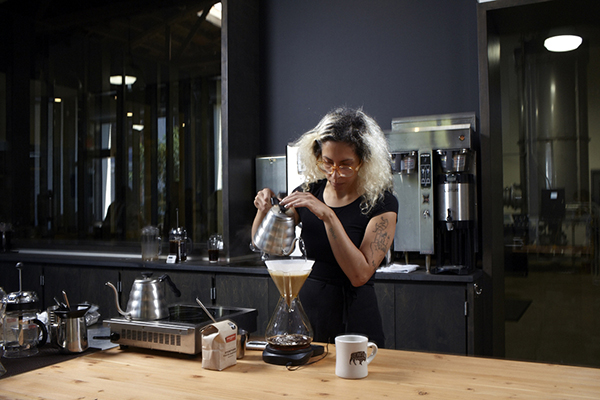
Indeed, if Stumptown is not already a household name, it will be soon: a partnership with über-trendy Ace Hotels has ensured that members of the cool crowd can get their artisanal coffee fix whether they’re visiting New York, Seattle, or Palm Springs. The NYC outpost, in the modern-chic lobby of the Flatiron District Ace Hotel, is officially one of the busiest coffee shops in the United States. (That’s if you’re gaging from the sheer number of Foursquare check-ins, which is exactly how the young, techsavvy movers and shakers in this country do currently judge.) The diverse crowd of representatives from both the art and financial worlds that frequent the impeccably designed joint and the friendly, dapper baristas are almost as much of a draw as the ideally brewed cups that are served there.
But one need not travel far or be a hipster to enjoy a fantastic cup of coffee: more and more independent cafés are choosing to serve Stumptown, because with the brand comes the guarantee of quality. First, there is the access to Stumptown’s carefully sourced beans, and second, extensive training for baristas, who get schooled in roasting, brewing and service. Also, Stumptown coffee, and the simple-to-use yet specialized equipment that will coax all the levels of flavor out of the fine beans, is finally available for purchase on the web. Sorenson’s work ethic and energy are clearly paying off.
Text by Karena Gupton Akhavein
Photography by Chris Mueller

